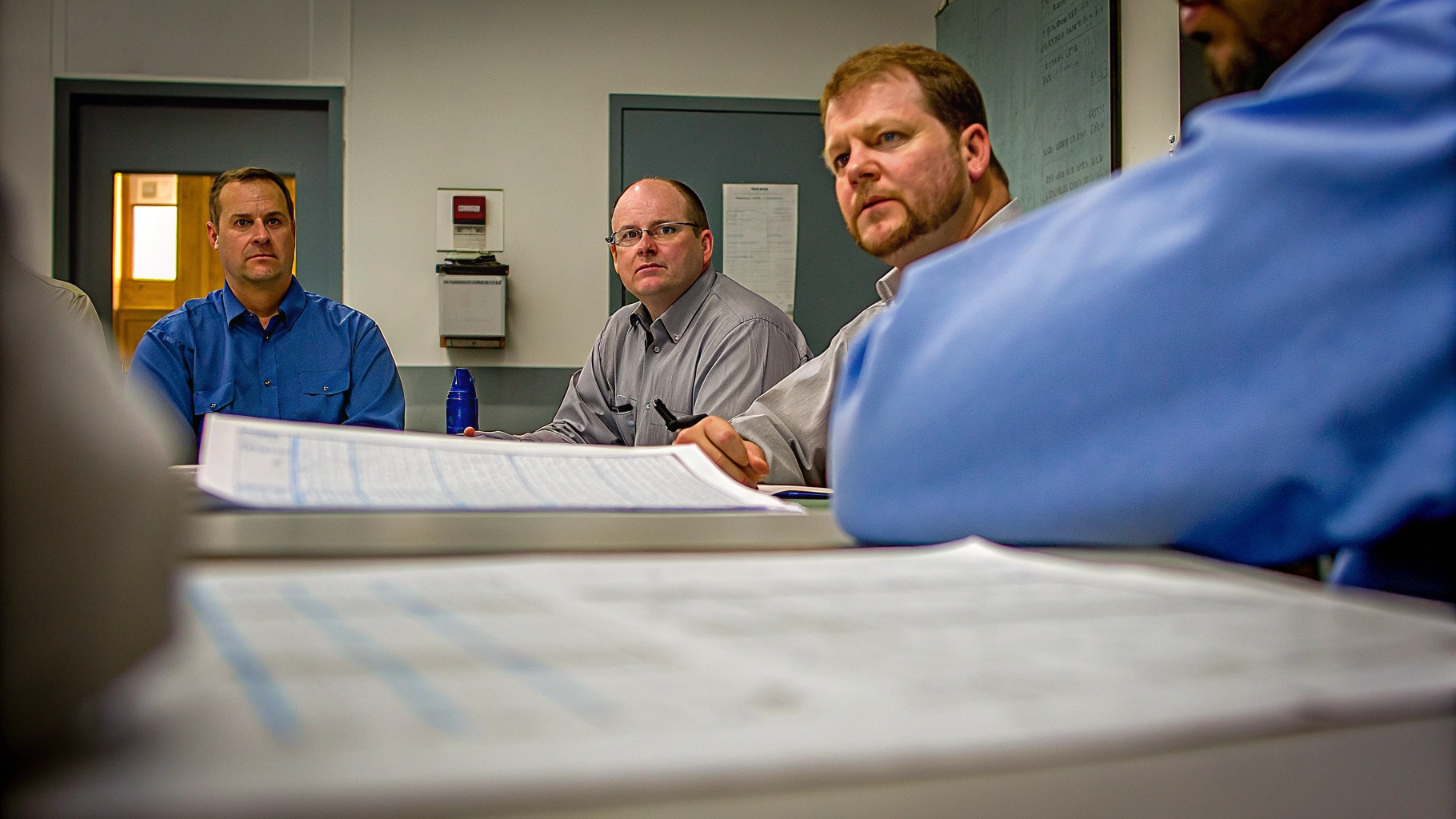Master Human Factors Testing: Essential Insights for Compliance Officers

Overview
Human factors testing is crucial for ensuring product usability and safety, especially in the pharmaceutical and medical device sectors, where human errors can pose significant risks. Thorough testing not only identifies design flaws early but also mitigates potential recalls and compliance issues. Statistics reveal that design-related failures account for a substantial percentage of medical device recalls, underscoring the necessity of rigorous testing protocols.
To address compliance challenges effectively, organizations must prioritize human factors testing as part of their product development process. By integrating comprehensive testing strategies, companies can enhance product safety and usability, ultimately fostering greater trust among users and stakeholders.
Consider the case of a leading medical device manufacturer that implemented a robust human factors testing program. This initiative not only reduced the incidence of design-related recalls but also improved overall product satisfaction ratings. Such examples illustrate the tangible benefits of prioritizing human factors in compliance efforts.
In conclusion, investing in human factors testing is not just a regulatory requirement; it is a strategic move that can lead to significant improvements in product safety and user experience. By adopting these practices, organizations can navigate compliance challenges more effectively and position themselves as leaders in the industry.
Introduction
Human factors testing stands at the intersection of product design and user safety, playing a pivotal role in industries where human error can lead to dire consequences. Compliance officers face significant challenges in ensuring that products not only meet regulatory requirements but also enhance user experience. This presents a unique opportunity to leverage insights from human factors testing effectively.
With a staggering number of medical device incidents attributed to operator mistakes, the pressing question arises: how can compliance professionals implement human factors testing to mitigate risks and improve outcomes? By addressing this question, we can explore actionable strategies that not only comply with regulations but also prioritize user safety and satisfaction.
In this article, we will delve into the critical aspects of human factors testing, providing detailed solutions and case studies that illustrate successful compliance projects. Through this exploration, we aim to empower compliance officers with the knowledge and tools necessary to enhance product safety and user experience.
Define Human Factors Testing and Its Importance in Compliance
Human factors testing is critical in analyzing how individuals interact with products, focusing on usability, safety, and overall experience. This testing, specifically human factors testing, is particularly vital in the pharmaceutical and medical device sectors, where human errors can lead to significant safety risks. In fact, the FDA receives around 100,000 medical device incident reports annually, with over one-third attributed to operator mistakes. This statistic underscores the urgent need for thorough human factors testing assessments. By understanding consumer behavior and potential challenges, compliance officers can ensure that products not only meet regulatory standards but are also safe for end-users.
The value of human factors testing lies in its ability to identify design flaws early in the development process, thereby reducing the likelihood of costly recalls and compliance issues down the line. Design-related failures are the leading cause of medical device recalls, accounting for 36% of such incidents. This statistic highlights the pressing need for effective human factors testing to assess usability. Furthermore, human factors testing aligns with Good Manufacturing Practices (GMP) and Quality System Regulations (QSR), which mandate that products be designed with user safety as a priority. As Richard Holden aptly states, "Human factors engineering is essential for enhancing the safety of critically ill patients." This emphasizes the necessity of integrating these principles into the design process through human factors testing to improve usability, mitigate safety risks, and ultimately enhance patient outcomes.
Explore Methodologies for Effective Human Factors Testing
Effective human factors testing employs a range of methodologies, primarily categorized into formative and summative assessments. Formative assessments occur during the design phase, focusing on iterative evaluations aimed at enhancing product usability. Techniques such as heuristic evaluations, cognitive walkthroughs, and participant interviews are commonly utilized to identify usability issues early in the development process. Notably, formative evaluations can effectively pinpoint usability problems, even with a small sample size.
In contrast, summative assessments are conducted post-development to ensure that the design meets individual needs and complies with regulatory standards. This phase incorporates techniques like usability testing, task analysis, and controlled experiments to thoroughly evaluate the item's effectiveness. For instance, a summative assessment demonstrated an increase in task success rates from 86% to 90%, alongside a significant rise in satisfaction from 74.85 to 89.55.
Compliance officers must carefully select approaches based on the item category, consumer demographics, and specific regulatory standards. This thoughtful selection ensures a comprehensive assessment of human factors testing, ultimately enhancing customer satisfaction and safety. Furthermore, integrating feedback from users during both the design and assessment stages is crucial for improving usability and ensuring that the final product meets audience requirements.

Understand Regulatory Guidelines for Human Factors Testing
Regulatory guidelines for human factors testing are crucial for ensuring the safety and effectiveness of medical devices. The FDA emphasizes that manufacturers must demonstrate their products are safe and effective for intended consumers, in line with the requirements outlined in ISO 62366. This standard provides a comprehensive framework for integrating human considerations into engineering, detailing procedures for identifying and mitigating risks associated with user interactions. Alarmingly, only 30% of Medtech companies feel adequately prepared for the upcoming changes mandated by the FDA, underscoring the urgent need for proactive compliance strategies.
Recent updates to ISO 62366 highlight the importance of thorough human factors testing, focusing on the meticulous documentation of the human factors engineering process. This involves pinpointing critical tasks that could result in serious harm if executed incorrectly. Compliance officers must ensure their evaluation protocols not only meet these regulatory expectations but also incorporate the latest guidance to facilitate successful product approvals. By staying informed and adapting to evolving standards, organizations can enhance their operational efficiency and reduce the risk of recalls, ultimately fostering a culture of continuous improvement in medical device design.

Identify Challenges and Solutions in Human Factors Testing
Human factors evaluation presents significant challenges, particularly in recruiting representative participants, managing diverse requirements, and effectively integrating findings into product design. Compliance officers often struggle to identify participants who accurately represent the target demographic, leading to potential biases in outcomes. To address this issue, employing diverse recruitment strategies is crucial. The FDA underscores the necessity of recognizing the full spectrum of use error possibilities, which can be more effectively achieved through a representative sample. Utilizing virtual evaluation environments can greatly expand participant access, facilitating a more representative sample. Research shows that while firms typically engage 11 test participants, the recommended size for effective testing is only 5, highlighting the diminishing returns of larger groups.
Balancing the needs of various groups adds another layer of complexity to design decisions. Compliance officers must prioritize client needs based on comprehensive risk assessments and regulatory requirements, ensuring that the most critical factors are addressed. For instance, when assessing medical devices, it is vital to consider the specific needs of pediatric groups alongside adult participants, as their interactions with devices can differ significantly. As noted by Joseph A. Cafazzo, the FDA particularly emphasizes tasks that have high severity and low occurrence, making it essential to effectively address these requirements.
Incorporating human factors insights into the design process necessitates effective communication between testing teams and developers. Establishing clear channels for feedback and collaboration is vital to ensure that user insights translate into meaningful design improvements. This collaborative approach not only enhances product usability but also aligns with regulatory expectations, ultimately leading to improved compliance outcomes. By tackling these challenges with strategic solutions, compliance officers can significantly enhance the effectiveness of human factors testing within their organizations.

Conclusion
Human factors testing is essential for ensuring that products, especially in the medical device and pharmaceutical sectors, prioritize user safety and usability. By integrating human factors testing into the development process, compliance officers can significantly mitigate the risk of human error, a leading cause of incidents reported to the FDA. This proactive strategy not only meets regulatory standards but also enhances the overall experience for end-users, ultimately leading to better patient outcomes.
The article has explored various methodologies for effective human factors testing, including formative and summative assessments. These techniques enable compliance officers to identify potential usability issues early in the design process and validate that the final product adheres to the necessary safety and effectiveness standards. Moreover, the emphasis on adhering to regulatory guidelines, such as ISO 62366, underscores the importance of thorough documentation and risk assessment to ensure compliance and minimize recalls.
Given these insights, it is imperative for compliance officers to embrace human factors testing as a core element of product design and development. By prioritizing user-centered design and addressing challenges related to participant recruitment and the integration of findings, organizations can cultivate a culture of continuous improvement. This commitment not only enhances product safety and usability but also aligns with the evolving regulatory landscape, ensuring that medical devices are compliant and capable of meeting the diverse needs of user populations.
Frequently Asked Questions
What is human factors testing?
Human factors testing analyzes how individuals interact with products, focusing on usability, safety, and overall experience.
Why is human factors testing particularly important in the pharmaceutical and medical device sectors?
It is vital in these sectors because human errors can lead to significant safety risks, and the FDA receives around 100,000 medical device incident reports annually, with over one-third attributed to operator mistakes.
What is the significance of the statistic regarding medical device recalls?
Design-related failures are the leading cause of medical device recalls, accounting for 36% of such incidents, highlighting the need for effective human factors testing to assess usability and prevent costly recalls.
How does human factors testing relate to regulatory standards?
Human factors testing aligns with Good Manufacturing Practices (GMP) and Quality System Regulations (QSR), which require that products be designed with user safety as a priority.
What are the benefits of conducting human factors testing early in the development process?
Conducting human factors testing early helps identify design flaws, reducing the likelihood of costly recalls and compliance issues later on.
How does human factors engineering impact patient safety?
Human factors engineering enhances the safety of critically ill patients by integrating usability principles into the design process, ultimately improving patient outcomes.
